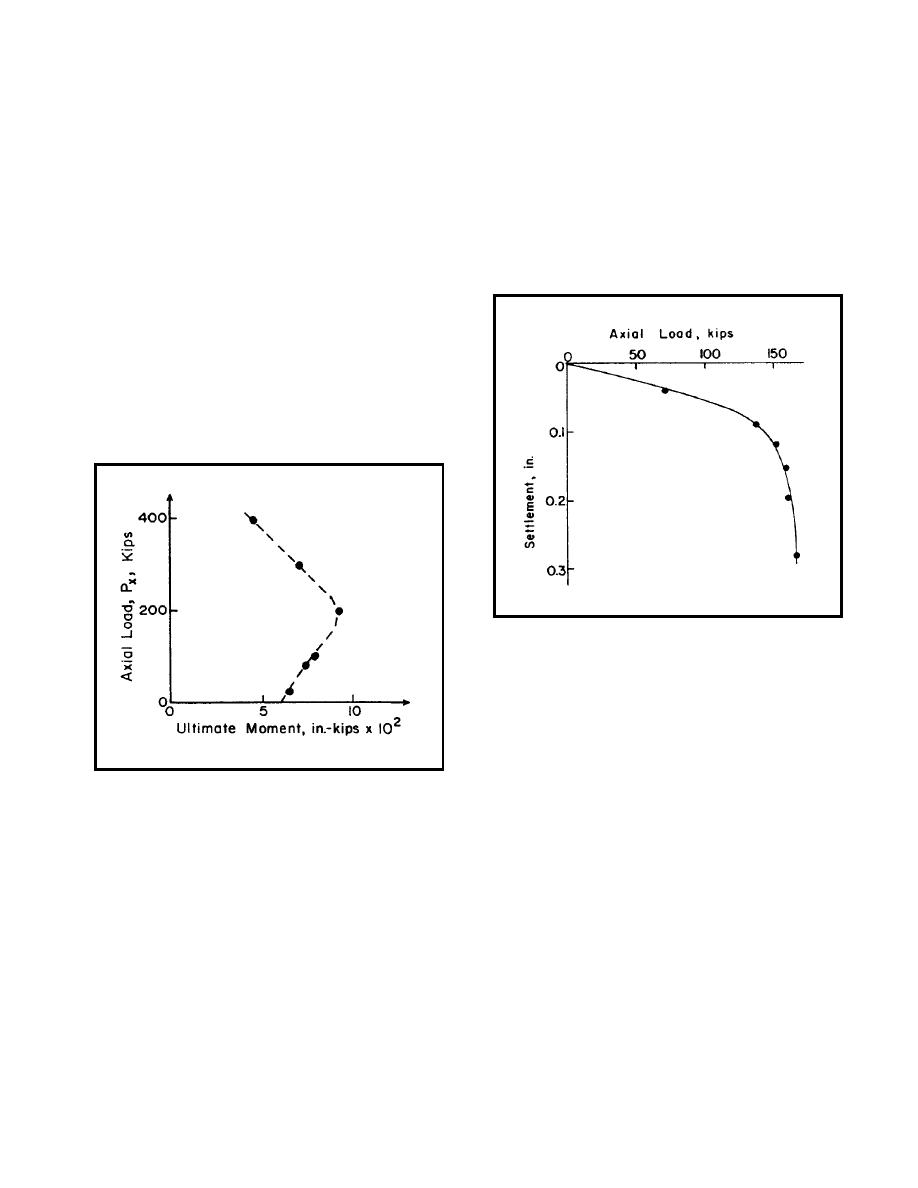
EI 02C097
01 Jul 97
with no fine particles. The surface of the backfill is treated
was further assumed that the pile heads were free to rotate.
to facilitate a runoff, and weep holes are provided so that
As noted earlier, the factor of safety must be in the loading.
water will not collect behind the wall. The forces P1 , P2 ,
Therefore, the loadings shown in Table 5-3 were used in the
Ps , and wP (shown in Figure 5-6) were computed as
preliminary computations. Table 5-4 shows the movements
follows: 21.4, 4.6, 18.4, and 22.5 kips, respectively. The
of the origin of the global coordinate system when
resolution of the loads at the origin of the global coordinate
equation 5-19 through 5-21 were solved simultaneously.
system resulted in the following service loads: Pv = 46 kips,
The loadings were such that the pile response was almost
Ph = 21 kips, and M = 40 foot-kips (some rounding was
linear so that only a small number of iterations were
done). The moment of inertia of the gross section of the pile
was used in the analysis. The flexural rigidity EI of the piles
was computed to be 5.56 109 pounds per square inch.
Computer Program PMEIX was run and an interaction
diagram for the pile was obtained. That diagram is shown
in Figure 5-7. A field load test was performed at the site
and the ultimate axial capacity of a pile was found to be 176
kips. An analysis was made to develop a curve showing
axial load versus settlement. The curve is shown in
Figure 5-8. The subsurface soils at the site
Figure 5-8. Axial load versus settlement for
reinforced concrete pile
required to achieve converenge. The computed pile-head
movements, loads, and moments are shown in Table 5-5.
(6) Verify results. The computed loading on the piles is
shown in Figure 5-9 for Case 4. The following check is
made to see that the equilibrium equations are satisfied.
Figure 5-7. Interaction diagram of reinforced concrete pile
E Fv ' 24.2 % 97.2 cos 14 &14.3 sin 14
consist of silty clay. The water content averaged 20 percent
' 24.2 % 94.3 & 3.5 ' 115.0 kips OK
in the top 10 feet and averaged 44 percent below 10 feet.
The water table was reported to be at a depth of 10 feet
EFh ' 15.2 % 14.3 cos 14 % 97.2 sin 14
from the soil surface. There was a considerable range in the
' 15.2 % 13.9 % 23.6 ' 52.7 kips OK
undrained shear strength of the clay and an average value of
3 kips per square foot was used in the analysis. A value of
EM ' & ( 24.2 ) ( 1.5 ) % ( 97.2 cos 14 ) ( 1.5 )
the submerged unit weight of 46 pounds per cubic foot as
& ( 14.3 sin 14 ) ( 1.5 )
employed and the value of g50 was estimated to be 0.005. In
' & 36.3 % 141.4 & 5.2
making the computations, the assumption was made that all
of the load was carried by piles with none of the load taken
' 99.9 ft&kips OK
by passive earth pressure or by the base of the footing. It
5-15


 Previous Page
Previous Page
